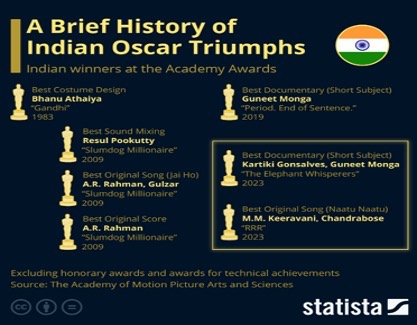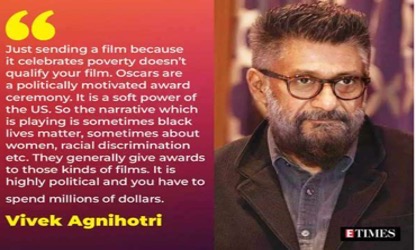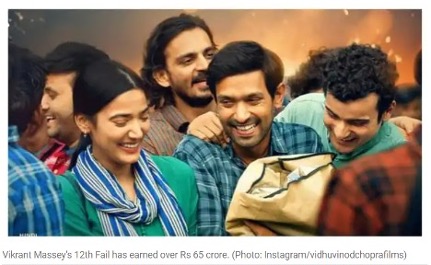India, a mosaic of cultures, traditions, and stories, boasts one of the world’s largest and oldest film industries. However, its journey on the revered stage of the Academy Awards, known as the Oscars, has been a tumultuous odyssey. As the vibrant tapestry of Indian cinema unfolds on the international canvas, this article intricately navigates the historical nuances and contemporary challenges faced by Indian films at the Oscars. With a special focus on the critically acclaimed “12th Fail,” we delve into the complexities that shape India’s pursuit of recognition on the global cinematic pedestal.
Understanding the Oscars
The Oscars, orchestrated by the esteemed Academy of Motion Picture Arts and Sciences, stand as the pinnacle of recognition in the global entertainment sphere. However, for India, a country with a rich cinematic heritage, the path to Oscar glory is a labyrinthine journey fraught with challenges. The selection process, involving member voting and country submissions, adds layers of complexity. Unraveling these intricacies is crucial to understanding why India’s cinematic gems often struggle to secure a place among the coveted Oscar nominations.

Historical Overview: India's Cinematic Tapestry at the Oscars
The relationship between India and the Oscars dates back to the 1950s when “Mother India” marked the country’s maiden submission in the Best Foreign Language Film category. Since then, the journey has been marked by sporadic nominations, with films like “Salaam Bombay!” and the epic saga “Lagaan” leaving an indelible mark. However, historical complexities, including political dynamics and a lack of strategic marketing, have cast shadows on India’s consistent presence at the Oscars.
Challenges Faced by Indian Films
Political Dynamics in Film Selection:
The Film Federation of India (FFI), an influential player in the selection process, often grapples with allegations of nepotism and regional biases. Recent shifts in considering regional films signal positive change, but historical struggles linger, affecting the diversity and representation of Indian cinema at the Oscars.
Lack of Marketing:
The absence of robust marketing strategies for Indian Oscar entries, a stark contrast to global counterparts like “Parasite” and “Roma,” has resulted in a pervasive lack of visibility. Historical instances reveal missed opportunities where effective promotion could have propelled deserving Indian films onto the global stage, fostering wider recognition.
Quality of Indian Films:
India, a powerhouse of storytelling, grapples with the Academy’s historical reluctance toward remakes and uninspired narratives. Instances where films like “Gully Boy” were chosen over potentially more compelling entries raise questions about the selection criteria. Scrutinizing the past unveils a pattern where safer choices often prevailed over groundbreaking narratives.

Blunders by the FFI:
The historical missteps of the Film Federation of India, including choosing “Barfi!” over “Gangs of Wasseypur,” underscore the challenges in selecting films that resonate globally. Overlooking critically acclaimed films like “RRR” and “The Kashmir Files” further diminishes India’s chances on the grand Oscar stage, revealing recurring challenges.
Streaming vs. Theatrical Competition:
The Academy’s historical preference for theatrical releases presents a challenge for films debuting on streaming platforms. India’s evolving OTT landscape, gaining prominence post-2018, places streaming-released films at a disadvantage. Historical context illuminates the evolving dynamics of film distribution and its profound impact on Oscar eligibility.
RRR’s Oscar Anomaly:
The magnum opus “RRR,” directed by S.S. Rajamouli, stirred waves globally but faced the perplexing decision of not being India’s official Oscar entry. Despite this, the film etched its place in Oscar history by securing an accolade for Best Original Song, underscoring the potential impact of independent campaigning. The case of “RRR” raises poignant questions about the Indian government’s role in championing films on the international stage and the dynamics of independent campaigns in Oscar recognition.
New Hope for Indian Cinema:
Recent developments, including the invitation of illustrious Indian artists like Shaunak Sen, Karan Johar, and Mani Ratnam to the Academy, signal a potential paradigm shift. While these invitations don’t guarantee immediate changes, they do provide a unique opportunity for Indian voices to resonate within the intricate fabric of the Oscar selection process. An exploration of the historical evolution of Academy membership offers a nuanced backdrop to these recent developments.

"12th Fail": A Glimpse into Indian Aspirations:
Amidst the complexities, “12th Fail” emerges as a symbol of hope and aspiration. Vidhu Vinod Chopra’s emotionally charged drama, along with the intense survival narrative of “2018,” finds itself in the pool of eligible films for the 2024 Oscars. These films represent rare contenders in the coveted Best Picture category for Indian cinema, opening a portal to explore the changing landscape of Indian cinematic narratives on the global stage.
Challenges Faced by "12th Fail" and "2018"
Despite their eligibility, both films stand at the precipice of formidable challenges in securing a coveted spot among the final nominees. The lack of extensive marketing campaigns, coupled with the looming shadow of strong global competition, poses a significant hurdle. The historical narrative of previous Indian Oscar entries serves as a compass, guiding these films through the turbulent seas of recognition.
The Impact of Academy Membership
The heightened representation of Indian artists in the Academy, while a laudable development, does not guarantee a direct correlation to Oscar success. Industry stalwarts like Karan Johar and Mani Ratnam, armed with voting rights, hold the potential to influence the selection process. However, the true impact of this burgeoning representation remains to be seen. A historical context illuminates the evolving relationship between Indian cinema and the Academy, hinting at possibilities that lie ahead.
Optimism Amid Skepticism
While the Academy’s inclusive policies signal progress, a lingering sense of skepticism persists. Questions about the sincerity of these initiatives and the pace of systemic change within the Academy continue to echo. Industry voices like Siddharth Roy Kapur express cautious optimism, emphasizing the collective responsibility to work towards a more diverse and inclusive future for global cinema. An exploration of historical precedents offers profound insights into the complex and often elusive process of effecting change within the Academy.
Conclusion
As the curtains draw on India’s cinematic saga at the Oscars, the narrative remains an intricate mosaic of ambitions, obstacles, and evolving dynamics. The inclusion of films like “12th Fail” in the race for the 2024 Oscars brings a surge of hope, yet the path to recognition remains arduous. The world awaits the unveiling of nominations, underscoring the imperative for strategic promotion, industry unity, and sustained dialogue within the Academy. The question endures: Can India break through the barriers and carve its place on the global cinematic stage? Only time will unfurl the answer, as the vibrant narrative of Indian cinema continues to unfold on the grand canvas of the Oscars.
Written by – Annesha Sengupta
Edited by – Kushi Mayur
